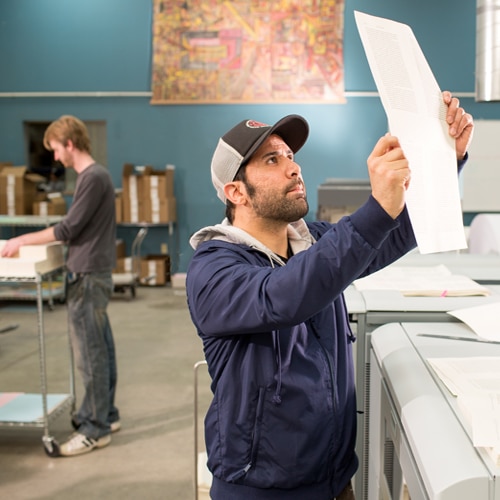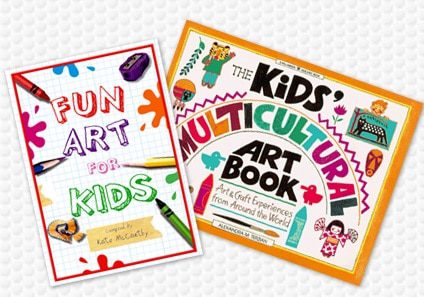What Bookbinding Method Suits Your art book Vision?
Discover the Vital Guide to Art Book Printing for Aspiring Artists and Publishers
As an aspiring artist or publisher, comprehending the nuances of art book printing is necessary to bringing your vision to life. You'll require to consider various variables, from picking the appropriate sort of book to ensuring color precision and picking suitable products. Each choice affects the end product significantly. What are the crucial components you should concentrate on to create a spectacular art book that genuinely represents your job?
Understanding Various Sorts Of Art Books
When you dive into the world of art publications, you'll swiftly find that they can be found in various forms, each customized to various creative expressions and audiences. Coffee table books commonly display sensational visuals, ideal for casual browsing, while monographs dive deep right into an individual artist's work, offering context and insights. If you're interested in certain art motions, exhibition directories provide in-depth paperwork of programs, featuring essays and critiques.
For training objectives, art guidebooks and technique books direct you via different tools and designs, making them crucial for striving artists. Each style offers its purpose, and knowing their distinctions can boost your art book journey.
Choosing the Right Paper and Products
Choosing the ideal paper and materials can greatly impact the total quality and feel of your art book. For dynamic colors and intricate information, choose for a shiny coating or a heavyweight matte paper that improves visual deepness.
Consider the weight of the paper, too. Thicker choices frequently provide an even more specialist look, while lighter documents can decrease printing expenses. Do not fail to remember concerning the binding products; a sturdy cover can protect your pages and include in guide's visual.
Finally, think about sustainability. Eco-friendly options are gaining popularity and can show your values as an artist. By thoroughly choosing your paper and materials, you'll guarantee that your art book not only looks great but also feels special in the hands of your readers.

Selecting the very best Printing Strategies
When it comes to publishing your art book, picking between balanced out and digital printing can substantially affect your end product. You'll additionally wish to think about just how paper quality influences the general appearance and feel of your artwork. Let's explore these crucial printing techniques to find the very best fit for your task.
Balanced Out vs. Digital Printing
While both offset and electronic printing have their benefits, choosing the ideal technique for your art book can substantially affect the end product. Countered printing offers high-quality pictures and vibrant shades, making it perfect for bigger print runs. If you're wanting to generate hundreds or thousands of duplicates, offset will offer you constant outcomes and lower per-unit expenses. On the other hand, electronic printing stands out for smaller quantities and quicker turnaround times. It enables for very easy personalization, enabling you to publish unique duplicates without extra arrangement costs. Consider your spending plan, timeline, and the volume of your task. Ultimately, your option needs to line up with your imaginative vision and distribution method, guaranteeing that your art book shows the high quality you prefer.
Paper Top Quality Factors To Consider
Picking the appropriate paper top quality can substantially boost the aesthetic charm and tactile experience of your art book. Start by thinking about the weight and structure of the paper. Much heavier paper commonly really feels more glamorous and can better showcase lively shades and detailed information. For prints, a glossy finish can make photos pop, while a matte surface offers a softer, much more refined appearance. Don't ignore the paper's illumination; brighter sheets can boost color accuracy and comparison.
Following, think of the sustainability of your selection. Eco-friendly alternatives are ending up being significantly prominent and can appeal to environmentally-conscious viewers. Lastly, demand samples to see just how various papers function with your artwork, guaranteeing the last product mirrors your vision completely.
Making Sure Color Precision in Your Prints
To achieve magnificent prints, you need to concentrate on shade precision from the beginning. You'll intend to utilize shade calibration strategies to verify your display and printer are in sync. Furthermore, proofing your job before the final print run can assist capture any inconsistencies, guaranteeing your art looks equally as you imagined.
Shade Calibration Techniques
Ensuring shade precision in your prints starts with efficient shade calibration strategies that aid maintain consistency between your electronic photos and last published products. First, calibrate your screen utilizing equipment calibration devices to attain the best color representation. This confirms that what you see on-screen matches what gets printed. Next, select a color profile suited for your printing process, like CMYK for print materials. Routinely inspect your printer's settings and preserve it to prevent shade changes. It's also important to make use of high-grade paper that matches your inks, as various surfaces can substantially influence shade outcome. By constantly using these methods, you'll improve the overall quality of your art prints and better share your imaginative vision.
Proofing for Accuracy
While you might assume your digital images await print, proofing is necessary for attaining shade accuracy. Prior to dedicating to a complete print run, constantly request an evidence from your printer. This enables you to see how shades translate from display to paper. Compare the evidence with your calibrated display to identify any disparities. Pay interest to saturation, brightness, and color, as these factors can significantly influence your end product.
If adjustments are required, communicate plainly with your printer about your preferred outcomes. Don't wait to request numerous proofs if required; it deserves the investment to obtain it right. Eventually, complete proofing guarantees that your art work is represented as you imagined it, maintaining your imaginative stability throughout the printing procedure.

Designing Layouts That Enhance Your Art Work
When you develop layouts for your art book, it's important to contemplate just how each element connects with your art work. Purpose for an equilibrium between visuals and message, making sure neither eclipses the various other. Usage white space tactically; it gives your art work space to breathe and attracts focus to its information.
Think about the flow of your book. Prepare pictures in next page a way that guides the reader's eye, creating a story or thematic progression. art book. Differ the dimensions and orientations of your art work to keep the design vibrant and intriguing
Select fonts that enhance your art work without distracting from it. Keep message concise and relevant, supplying context or insight that improves the viewer's experience.
Finally, examination different designs. Print examples to see just how the designs translate theoretically, and change as needed. By attentively developing your designs, you'll develop a visually appealing art book that reverberates with your audience.
Binding Options for a Specialist Complete
Picking the right binding choice can greatly impact the overall discussion of your art book. You'll want to take right into account both aesthetics and longevity when making your selection. Popular alternatives include perfect binding, which offers a sleek look and is best for thicker publications; saddle stitching, perfect for smaller sized pamphlets; and spiral binding, which permits web pages to lay level for simple watching.
If you're going for a premium feel, situation binding is a superb selection, providing a tough cover and a professional appearance (art book). Don't forget the cover product; alternatives like fabric, natural leather, or a glossy coating can boost see this here your book's appeal
Whatever choice you pick, make certain it matches your artwork and enhances the visitor's experience. Take your time to evaluate the advantages and disadvantages of each method, so your final item shows the top quality of your creative vision.
Preparing Your Apply For Publish Readiness
To assure your art book is print-ready, you'll need to pay attention to file prep work. Begin by setting your file size to match your desired print dimensions. Usage high-resolution pictures-- 300 DPI is the requirement-- to identify sharp, lively visuals. Convert your files to CMYK mode, as this shade area is finest for printing. Do not forget to consist of hemorrhage areas, usually an extra 0.125 inches around your pages, to stop any kind of white sides after cutting.
Likewise, install your fonts or convert text to describes to prevent any font style concerns. Save your operate in a PDF style, as this is one of the most accepted documents kind for printers. Double-check your declare any type of typos or layout mistakes, as changes can be costly after the truth. Ultimately, take into consideration developing a proof to evaluate prior to the final print run. Adhering to these actions will certainly aid you accomplish a sleek, professional art book.
Often Asked Questions
What Is the Ordinary Cost of Printing an Art Book?
The standard price of publishing an art book varies, but you can anticipate to pay anywhere from $5 to $20 per duplicate, relying on factors like size, paper quality, and printing quantity.
Just How Can I Discover a Reliable Printing Business?
To locate a reliable printing company, begin by researching online reviews and asking fellow musicians for recommendations. Compare quotes, examine portfolios, and communicate your needs clearly to guarantee they recognize your vision and quality assumptions.
What Is the Common Turn-around Time for Printing?
The typical turn-around time for printing differs however generally ranges from one to four weeks. Variables like task intricacy and quantity can affect this. Constantly validate with your chosen printer for certain timelines and assumptions.
Can I Print My Art Book in Limited Quantities?
Yes, you can absolutely publish your art book in minimal quantities. Many printing business supply short-run options, enabling you to create simply the number you need, making it easier to take care of costs and inventory.
What Lawful Considerations Should I Know for My Art Book?
You ought to think about copyright, licensing agreements, and version releases official statement when producing your art book. Make sure you can make use of all photos and message, protecting yourself from potential legal problems later on.